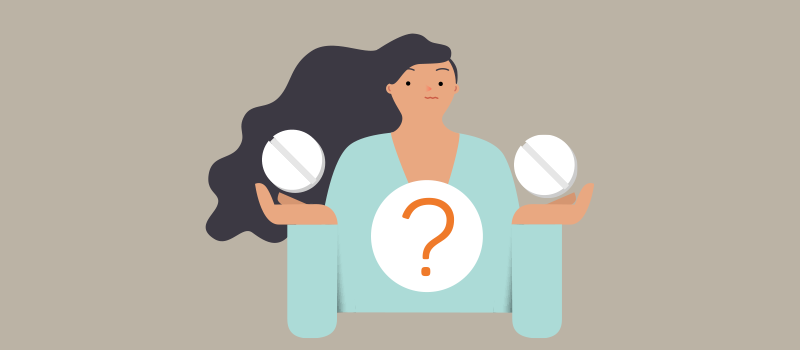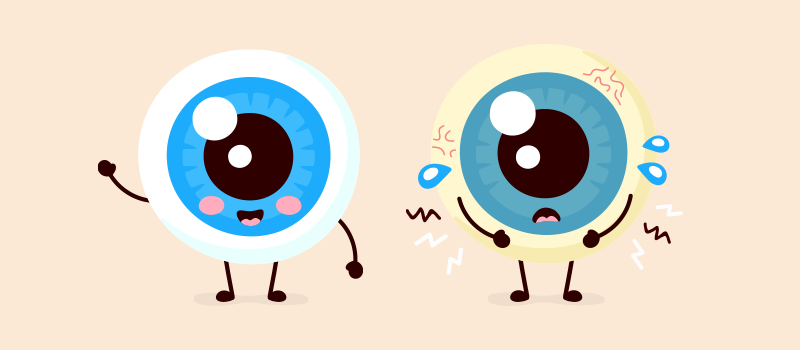What’s the Buzz
The Bee Healthy Blog
Bacitracin vs. Neosporin: Which is Better?

Topical antibiotics are ointments or creams that can be used directly on the skin. The antibiotic component of these products are used to treat or prevent bacterial skin infections caused by minor injuries like cuts or scrapes. These medicines are available both over-the-counter and with a prescription. Please keep reading to learn about the differences between two commonly used topical antibiotic ointments—Bacitracin and Neosporin as they can be useful addition for your medicine cabinet or on-the-go first-aid kit.
Is Neosporin the same as Bacitracin?
Neosporin and bacitracin are not the same. Both are FDA-approved topical antibiotic products, but they contain different ingredients.
Bacitracin contains only one antibiotic (bacitracin zinc). It is available in generic form.
Neosporin contains three antibiotics--bacitracin, polymyxin B sulfate, and neomycin sulfate. It is commonly called “Triple Antibiotic Ointment.” Neosporin is available in both brand name and generic forms.
What’s the main difference between Bacitracin vs. Neosporin?
Formulation
Bacitracin contains a single antibiotic. It is available in generic form and can be purchased over the counter.
Regarding dosage form, Bacitracin is available as an antibiotic ointment. On the other hand, Neosporin offers more options with both topical ointments and cream forms.
Neosporin contains three antibiotics - bacitracin, polymyxin B, and neomycin. It is available in both brand and generic forms. In addition to the well-known Triple Antibiotic ointment, Neosporin is also available under other products containing the three base antibiotics plus at least one more ingredient - examples are listed below:
- Triple Antibiotic Ointment and Neosporin Original Ointment (the most common forms, which contain three antibiotics—bacitracin, polymyxin B, and neomycin).
- Neosporin + Pain Itch Scar Ointment, Neosporin Burn Relief & First-Aid Antibiotic Ointment, and Neosporin + Pain Relief Ointment and Cream (these contain three antibiotics and pramoxine which is a topical anesthetic)
- Neosporin Kids Plus Pain Cream and Neosporin + Pain Relief Cream (they contain polymyxin sulfate, bacitracin, and pramoxine)
- Neosporin Lip Health Overnight Renewal Therapy (it contains white petrolatum or petroleum jelly, which is the main ingredient in Vaseline)
- Simply Neosporin and Polysporin (these are double antibiotic ointments that contain polymyxin B and bacitracin)
Coverage and Cost
Bacitracin and Neosporin are OTC products and are not usually covered by health insurance or Medicare Part D. If Neosporin is prescribed for you, some health plans may cover the generic forms.
A 1-ounce tube of bacitracin costs around $5, while brand-name Neosporin is around $11. You can get both products at discounted prices with a BuzzRx card--just ask your doctor for a prescription.
Side Effects
Both bacitracin and Neosporin are generally well tolerated with only a few common local side effects such as mild skin irritation, itching, and redness.
You should seek emergency medical attention if you develop any signs of allergic reaction including rash, hives, itching, difficulty breathing, and swelling of the throat, tongue, lips, and face.
Though not common, allergic contact dermatitis is another adverse drug event that you should be aware of while using antibiotic ointments. This condition is a delayed hypersensitivity reaction resuting in red, scaly, itchy skin 24-48 hours after coming in contact with either ointment.
Rarely neomycin, which is present in Neosporin, can cause hearing loss. However, the risk is very low with the topical medication. You should contact your healthcare provider immediately if you notice any hearing changes while using Neosporin.
What are Bacitracin and Triple Antibiotic Ointment used to treat?
Both ointments are used to treat minor cuts, scrapes, scratches, and burns. They help to keep the wound clean and reduce the risk of infection. In addition to the antibacterial properties, certain antibiotic topical products are formulated to ease pain, inflammation, and reduce the severity of the scar.
Keep in mind that these over-the-counter antibiotic ointments are only for the treatment of uncomplicated skin injuries. They are not a substitute for medical care. You should not use bacitracin or Neosporin to treat a serious skin infection or deep wound. If the wounded area becomes red, swollen, or starts oozing, contact your healthcare provider without delay. You may need treatment with oral antibiotics, stitches, or vaccinations.
What is better: Neosporin or Bacitracin ointment?
Both bacitracin and Neosporin are over-the-counter topical antibiotic products. However, bacitracin ointment contains only one antibiotic, while Neosporin contains three antibiotics. Therefore, Neosporin offers broader coverage against bacteria. One additional distinction is that Neosporin can kill certain types of bacteria. Bacitracin, on the other hand, only works to stop the growth of bacteria.
With that said, no head-to-head trial has directly compared bacitracin and Neosporin, so there is no evidence to prove that one agent is more effective or safer compared to the other. It is very common that people choose one over the other based on their personal preference, while others use these two topical antibiotic agents interchangeably.
In general, research has shown that topical antibiotics like bacitracin and Neosporin can prevent infection. However, they only minimally reduce the risk of infection compared to antiseptics like hydrogen peroxide and even placebo (applying nothing on the wound). Given the risk of antibiotic resistance, antiseptics are a good alternative to these antibiotics. Studies have also found that white petrolatum is a safe and effective ointment for wound care. It can reduce the risk of infection and has a lower risk of causing an allergic reaction than antibiotic ointments.
What are the pros and cons of using antibiotic ointments?
The benefits of using an antibiotic ointment like bacitracin and Neosporin are that it prevents infection, eases pain, and keeps the wound moist.
The risks of using over-the-counter antibiotic ointments include:
- Allergic reactions. Bacitracin, neomycin in Neosporin, and other topical antibiotics can cause allergic contact dermatitis. There are some risk of slowing down wound healing and increased risk of dangerous skin infections like cellulitis.
- Toxicity. Using too much topical antibiotic on large areas of the body can lead to absorption of the medicine into the bloodstream causing undesirable side effects.
- Antibiotic resistance. Overuse of antibiotics can make infections harder to treat in the future.
- It is unclear if these ointments are safe to use during pregnancy or breastfeeding.
How to use bacitracin and Neosporin safely?
- Do not use Neosporin or bacitracin if you are allergic to any of the ingredients.
- Neosporin and bacitracin are for external use only. Do not ingest them. Do not apply these ointments or creams to the eyes or large areas of the body unless being instructed by a healthcare provider.
- Seek professional medical care for a deep wound, open wound, puncture wound, animal bite, or serious burns.
- Contact your healthcare provider if your wound does not heal after one week of using an OTC antibiotic ointment.
- Stop using the ointment and contact your healthcare provider if your wound looks worse or you develop signs and symptoms of an allergic reaction.
- Store all medicines safely out of the reach of children and pets.
Why is Neosporin no longer recommended?
Neosporin is no longer recommended because it contains neomycin, which is a common allergen. It frequently causes allergic contact dermatitis with red, itchy, and scaly skin. The skin reaction gets worse the more Neosporin you use. Therefore, in recent times, Neosporin or Triple Antibiotic Ointment use has declined because of a risk of allergy.
What is the best antibiotic ointment to use?
The best antibiotic ointment is the one that works for you without causing a skin reaction. If you have a history of allergy to topical antibiotics, check with your doctor or pharmacist about which one is safer for you—bacitracin or Neosporin. Remember, these OTC antibiotic ointments are not for the treatment of severe wounds. Make sure you see a doctor if you have severe pain, swelling, redness, or pus oozing from your wound.
References:











SOCIAL